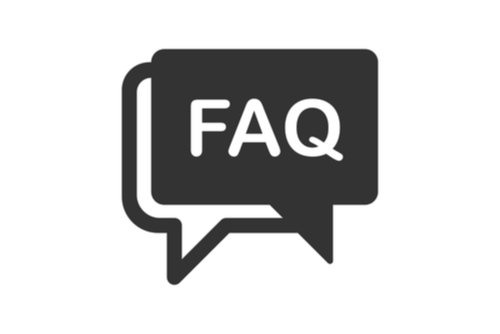|
Frequently Asked Questions (FAQs) Our tests have a minimum shelf life of 12 months, up to 24 months. Drug detection times indicate the period after you last took a drug, that drug testing can reveal its presence or resulting metabolites in your specimen. The amount of time that a drug metabolite remains detectable in urine can vary, depending on the following factors: Amount and Frequency of Use: Single, isolated, small doses are generally detectable at the lower boundary. Chronic and long-term use typically result in detection periods near or at the upper boundary. Metabolic Rate: Individuals with slower body metabolism are prone to longer drug detection periods. Body Mass: In general, human metabolism slows with increased body mass, resulting in longer drug detection periods. In addition, THC (marijuana's active ingredient) and PCP are known to accumulate in fatty lipid tissue. Chronic users, physically inactive users, and individuals with a high percentage of body fat in relation to total body mass are prone to longer drug detection periods for THC and PCP. Age: In general, human metabolism slows with age, resulting in longer drug detection periods. Overall Health: In general, human metabolism slows during periods of deteriorating health, resulting in longer drug detection periods. Drug Tolerance: Users typically metabolize a drug faster once a tolerance to the drug is established. Urine pH: Urine pH can impact drug detection periods. Typically, highly acidic urine results in shorter drug detection periods. For information about specific substances, check out: How Long Are Substances Detectable? Our Urine Drug Test products are FDA 510 Cleared; some are CLIA Waived.
Our Drug Tests are up to 99% accurate and have up to a 24-month shelf life.
Our Rapid On-site Drug Tests are screening detection devices for drugs of abuse that give you a qualitative result; positive or negative, and so for positive drug results we recommend that you send them to a Drug Testing Laboratory for GC/MS confirmation. All Presumptive Positive Results should be sent to our lab for confirmation to ensure the result is accurate. Contact us to purchase a confirmation pack Repeat the test, carefully following the written procedure. The most common cause for a control line not developing or appearing is failure to add sufficient urine sample to complete full migration through the test panels. 98% of reported incidents regarding unexpected results, lack of a control line or test integrity are the result of user error or test contamination at the point of testing. Any very faint line on the test region could indicate that the drug in the sample could be near the cut-off level for the test. However, any line in the test area, no matter how faint, should be interpreted as a negative test. Perform a second test or send the specimen to a laboratory to obtain quantitative results. If laboratory confirmation is desired for uncertain test results, don't hesitate to contact us. Anything that can transform or alter a drug test. Table salt, bleach, laundry detergent, lemon juice, vinegar, toilet bowl cleaner and eyedrops – are all household chemicals which are used for adulterating urine specimens. These can all be identified through routine specimen integrity tests (creatinine, pH, temperature and specific gravity), except eyedrops. Moreover, some adulterants – Klear, Urine Luck , Whizzies and Stealth cannot be detected. However, if the concentrations of specific abused drugs are reasonable then they can be successfully masked during drug testing by the adulterants. For monitoring performance of tests for creatinine, pH and specific gravity and for identifying the presence of such adulterants – urine dipstick tests are available commercially. Although the effectiveness of masking drugs-of-abuse testing has not been fully validated, there are specific saliva-cleaning mouthwashes and hair shampoo available that help in avoiding detection of drugs in saliva samples or hair. Exposure to hemp oil can lead to positive results for marijuana. Additionally, consumption of poppy seed cake can lead to positive screening tests results for opiates. Even though these do not represent the actual drug of abuse, the previous examples can be classified as positive results in drugs-of-abuse testing. 30 ml of Urine is recommended, especially if you are sending to the urine specimen to our recommended SAMSHA Certified Drug Testing Laboratory for GC/MS confirmation.
If you do not need to send the urine specimen to a drug testing lab and you are drug testing with a Urine Dip Card or Drug Test Cassette w/ pipette then 15ml of urine or less can be used. Amphetamine (AMP),
Barbiturates (BAR),
Benzodiazepines (BZO),
Buprenorphine (BUP),
Cocaine (COC),
Ecstasy (MDMA),
Marijuana (THC),
Methadone (MTD),
Methamphetamine (mAMP),
Morphine (MOP),
Opiates (OPI),
Oxycodone (OXY),
Phencyclidine (PCP),
Propoxyphene (PPX), A chain of custody form is a drug result form that records positive and negative results for drugs being tested for. We offer the chain of custody form in two forms either carbon copy or a pdf format. The carbon copy has to be purchased while the pdf file will be sent over through email at no additional charge. You company should already be set up with our recommended SAMSHA Approved Drug Testing Laboratory and MRO (Medical Review Officer) service before this happens. IDrugScreen can assist you with setting up a Drug Testing Laboratory. You will get free packaging materials and shipping materials to ship your drug specimen to the Drug Testing Laboratory. After the Drug Testing Laboratory finishes the GC/MS Confirmation and the Medical Review Officer finishes reviewing the confirmation results, the drug test report will be sent via fax or email or available online for you. Our parent company, Nationwide Testing Association, has an in-house medical review officer for you to use. Contact us for more information! 
|